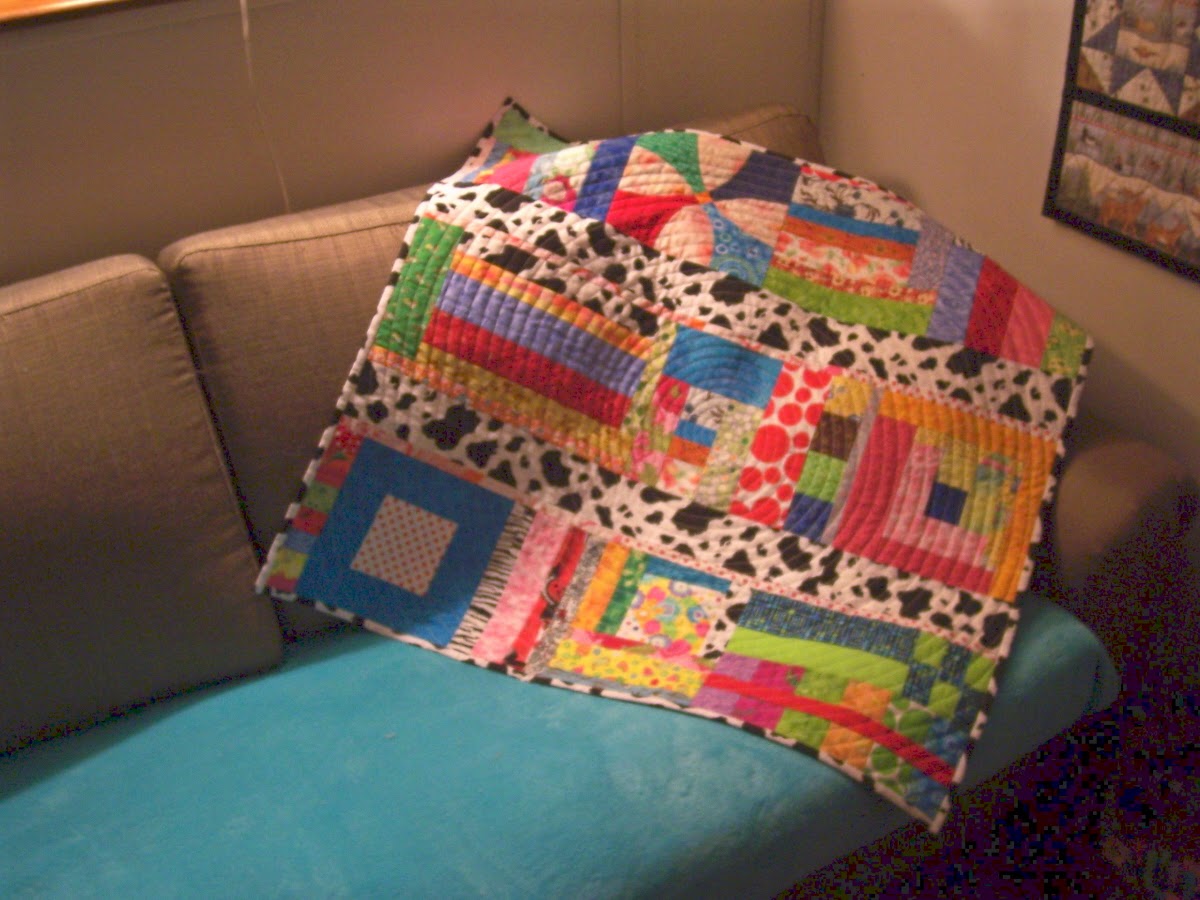Firstly, I feel strongly that thorough basting is your best friend on this type of project. I taped the back to my cutting table, and made my layers. I then reached for my basting pins and started out putting them 2 inches apart. Well, my fingers were hurting very quickly, and I thought of how often I would be UNPINNING, and the odd angles that the pins might be lying in when I came upon them. So, before going even two rows that way, I decided to remove the pins and use thread-basting instead.
I grabbed my curved needle and basted about 4 inches apart, horizontally as well as vertically. With hindsight, I would suggest even closer basting lines, maybe 3 inches apart, because you are going to be quilting across the stretchy bias of the fabric half of the time.
I put my open-toed walking foot on my old Singer model machine (in cabinet), donned my rubber-dotted quilting gloves, and started at the center of the quilt. I considered starting off to one side and making maybe 3 different spirals, but being my first attempt, I thought I'd better stick to one for now.
Since this quilt has several different sizes of dots in the fabric prints,
I decided to use a dime-sized one near the middle as my starting/reference point. Holding my hands flat on the part of the quilt on either side of my walking foot, I circled the dot part-way around, and started getting a little bigger so that I could line up the edge of my walking foot with my beginning stitches.
When I began, and for the first 4-6 inches of rounds, it was a strain on my shoulders, not from the weight of this tiny quilt, but from the action of keeping my hands flat on the machine-bed while turning the quilt to follow the circular pattern of my previous stitching. As the rounds got farther out, this became much easier. I gradually let the distance between the edge of my walking foot and the previous round get bigger....first an eighth of an inch and finally a quarter of an inch. This made the actual 'channel' more like 3/4 inch to one inch by the time I reached the outer edges of the quilt.
Even though I used a walking foot, everytime I came around diagonally across the bias, fabric would try to 'push' up a bit in front of my stitching. If I had clipped the basting stitches in front of these 'pushes', as I was tempted to do, great distortion would have occurred. Instead, I eased through these areas, and only wound up with the tiniest of tucks in a couple of places, which are pretty much unnoticeable to anyone but the stitcher, myself.
Eventually you'll reach the edges of the quilt and still have corners that are unquilted. At this point, I just lined up the foot the same distance as earlier rounds along previous stitching, quilted the arc, broke thread, and went back to do it again until the areas were filled.
Because this was improv piecwork, slight distortion is not really noticeable, and I was able to square up the quilt, before binding, with no problem. If this top was made up of precision pieced blocks, it most likely would be a different story. For that reason, I will probably save this type of piecing for more freeform pieces.
As far as concern for circles not being truly round or perfectly spaced, the finished look seems to remove all imperfections from the naked eye.
And that's my take on spiral quilting. I AM NOT anxious to try this method on a large quilt, mainly because of the wrestling act that would take place as I fed a large quilt 'round and 'round through the harp of my machine ! But I do admire quilters who HAVE accomplished such a task !
I hope this was helpful and that I get to see YOUR finished spiral quilting project !
























